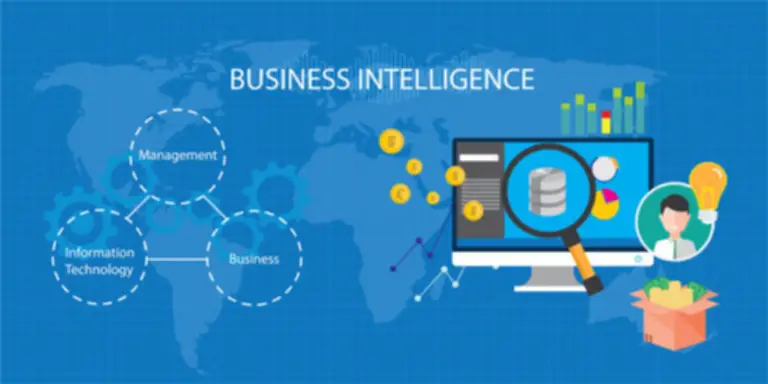Start your free trial or connect with our specialists to explore how IBM MQ can transform your operations. I encourage you to study extra about discovering a non-disruptive path to the cloud in your enterprise. Then, discover the options inside cloud integration to begin out planning the trail on your company. By partnering with IT Convergence, you presumably can leverage their deep experience in cloud technologies, guaranteeing a smooth and efficient integration course of that aligns with your small business targets. Otherwise generally known as an iPaaS, this integration device cloud integration examples might help you combine any combination of apps and on-prem systems from the cloud.

Key Advantages Of Information Integration:
This resolution is time-consuming for firms with limited inside sources as it requires a educated developer to deploy and preserve it. The extra limited functionality and studying curve may be a turn-off for agile companies. Some downsides to utilizing data virtualization embrace a fancy implementation course of and ongoing upkeep. If not arrange correctly from the beginning, performance issues could derail any efforts to be more productive. Ensuring compatibility with all of the exterior sources you may want to use is also challenging. The greatest way to strategy information integration will depend on your particular wants, bandwidth, and preferences.
How Can Ipaas Help With Cloud Integration?
Businesses implement cloud integration initiatives to eliminate silos, optimize workflows and enterprise processes, and join difficult on-premises applications with extra trendy options. It offers a seamless mix of applications, information, and techniques across on-premise and cloud environments, enhancing business operations and decision-making. Furthermore, integration by way of iPaaS platforms brings manifold benefits whereas varied integration types cater to specific enterprise wants.
What Are The Advantages Of Cloud Integration Platforms?
Through cloud integration, companies can entry their information anytime, wherever, from multiple gadgets, providing a extra environment friendly and agile strategy to knowledge management. Integration platform as a service (iPaaS) is a simple answer for internet hosting, developing, and integrating cloud data and SaaS functions. The best iPaaS solutions embrace simple, graphic tools to assist visualize and work with your overall enterprise intelligence picture. More and more organizations are maximizing their budget and mind power by choosing integration-platform-as-a-service (iPaas) solutions. These integration options provide flexibility and scalability, and might typically serve each enterprise customers and extremely technical customers equally nicely.
- While highly effective, real-time integration can be complex to implement and should require significant infrastructure funding to handle high-volume, continuous data flows.
- The knowledge integration course of will involve many shifting items, all with a possible menace to your data security and privateness.
- With a single source of fact, information groups can run deep analysis, create dashboards and reporting in a BI device, or construct self-service products that non-analysts can use to get answers on the fly.
This democratization of knowledge integration can significantly improve organizational agility and cut back IT bottlenecks. By following this strategic approach, organizations can effectively implement knowledge integration know-how, creating a robust basis for data-driven decision-making and operational excellence. Remember that data integration is an ongoing process that requires continuous attention and adaptation to remain aligned with evolving enterprise necessities and technological advancements. By successfully achieving these targets and leveraging these advantages, organizations can gain a major competitive benefit in their respective markets. Data integration serves as a foundational element for digital transformation initiatives, enabling businesses to turn into extra data-driven, environment friendly, and conscious of market demands. Shared access to built-in data fosters improved cooperation across departments, effectively breaking down organizational silos.
Cloud integrations could also be cloud-to-cloud or cloud-to-on-premises, however both involve integrating a business’s data and logic (such as that in COBOL applications) into a single user-friendly interface. For instance, OpenLegacy’s hybrid cloud integration makes use of a microservices-based structure that’s straightforward to scale with minimal disruption. It’s additionally highly customizable and flexible, so you can configure it to match your present and future enterprise wants. An effective cloud integration solution ought to provide workflow automation to remove manual duties and integrate online companies like Salesforce with your existing techniques.

However, that does not remove an organization’s possible challenges with integration priorities. At Rishabh, we’ve assisted a number of enterprises with their important decision to move to the cloud. We assist accelerate business processes & create efficiencies by connecting any software & information over a unified platform. Not only does cloud integration scale back value by enabling automation, it additionally reduces IT overhead. Instead of maintaining legacy integration flows and including to the backlog with every adjustment, engineers can modernize their architecture and unlock time for core development initiatives.

Point-to-point integration is the best and most direct method of connecting two cloud purposes or providers. It involves creating a custom code or utilizing a third-party device to determine a one-to-one hyperlink between the supply and the goal methods. Point-to-point integration could be quick and simple to implement, however it can additionally create issues such as information inconsistency, security vulnerabilities, and upkeep difficulties because the number of integrations grows.
The time period cloud integration may refer to several combos of deployments and options. Some corporations choose a hybrid deployment that keeps delicate information on-premise but permits methods to interact with cloud functions for streamlined workflows. Others deploy absolutely within the cloud, using APIs and connectors to combine apps and analyze real-time knowledge in fashionable BI tools. A cloud integration initiative refers to each integrating applications and facilitating the real-time circulate of knowledge through legacy and cloud-based systems. Concepts related to cloud integration embody cloud orchestration, cloud data integration, hybrid integration, and iPaaS.
It helps them combine cloud-based applications & techniques with domain-specific capabilities around ecosystem enablement, IoT, and mobility. But earlier than we delve deeper into how iPaaS helps businesses with cloud integration, let’s first perceive what a cloud integration platform is. It’s price noting, that the market for hybrid cloud integration platforms is anticipated to grow considerably, with a compound annual development rate (CAGR) projected to exceed 20% over the following a number of years. This is driven by the increasing adoption of cloud companies and the need for seamless integration between on-premises and cloud environments.
When it comes to selecting a cloud integration answer, first think about the sort of integration you need一for occasion, cloud-to-cloud or cloud-to-on-premises (and what sort of on-premises). The problem with ETL is it’s usually a source of latency and complexity, particularly if your business works with massive volumes of knowledge. Alternatively, use an iPaaS platform that may run, automate, and improve ETL workflows. Also, apps typically have different access necessities and knowledge protocols, and some tools are better at coping with this than others. As a enterprise grows, you can end up with copies of the same information units in numerous techniques and functions. This reduces the risk of human error, so you’ll at all times be working with correct data.
This article explores the top five cloud integration methodologies, providing executives with insights to make informed choices that align with their business goals. Middleware is the “glue” between completely different applications and databases, permitting them to communicate and function collectively. It provides companies enabling interoperability between computing systems and software applications—including everything from messaging services and data management to utility companies and authentication. Your analysts and SaaS administrators need real-time insights from cloud functions. Select a solution for cloud connectors that can deal with all your cloud, on-premises, cellular and social information sources. An intelligent API administration answer enables knowledge insights and integration-driven pipelines.
Get a free trial of Connect Cloud to expertise the power of modern knowledge virtualization solutions. This post will discuss the means to go about information warehouse implementation, its elements, benefits, finest practices, assets required, and more. Cleo Integration Cloud – supplies digital integration agility across cloud and on-premise functions. MuleSoft Anypoint Platform – consists of various tools for creating, managing and testing utility programming interfaces (APIs). Supercharge your business with IBM MQ’s secure, high-performance messaging options.
Transform Your Business With AI Software Development Solutions https://www.globalcloudteam.com/ — be successful, be the first!